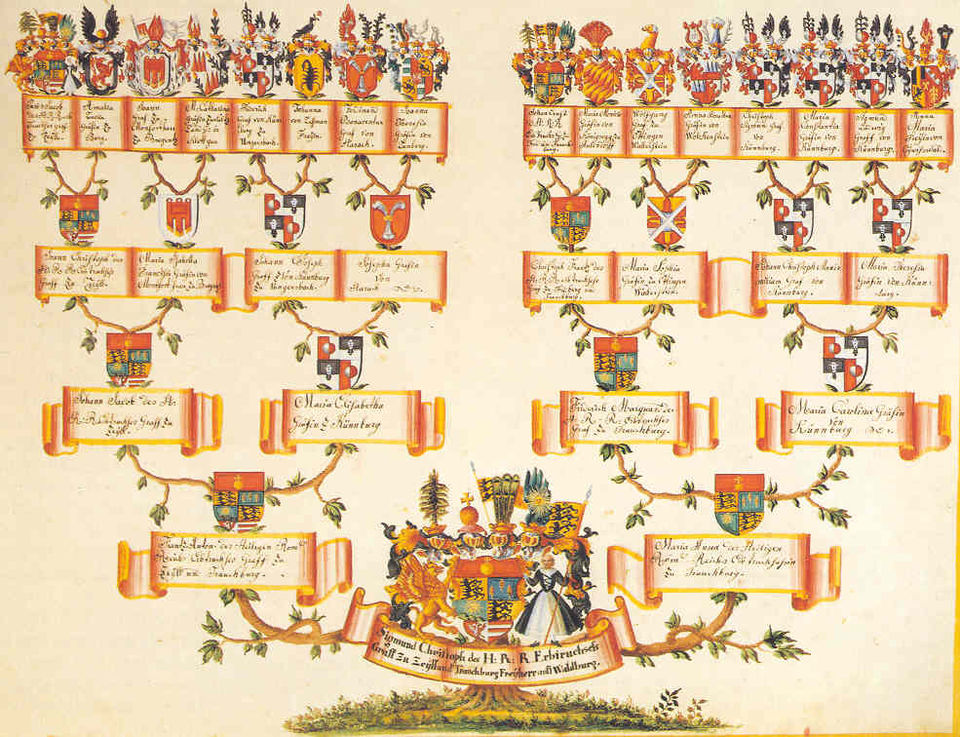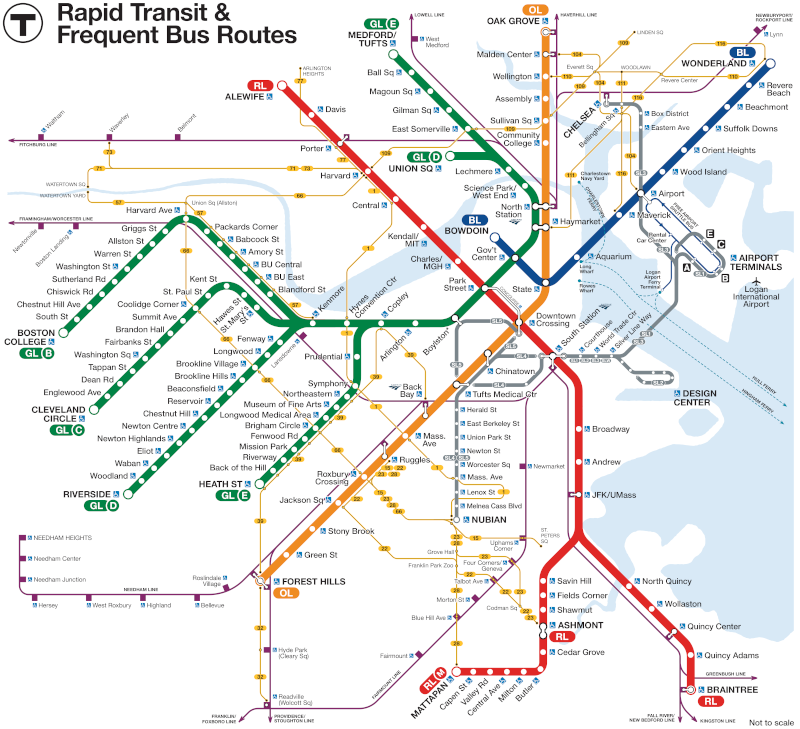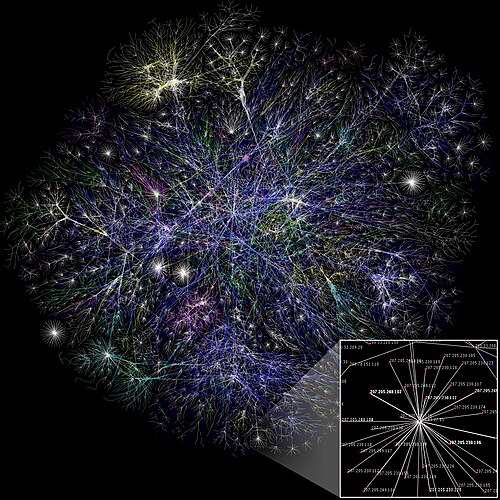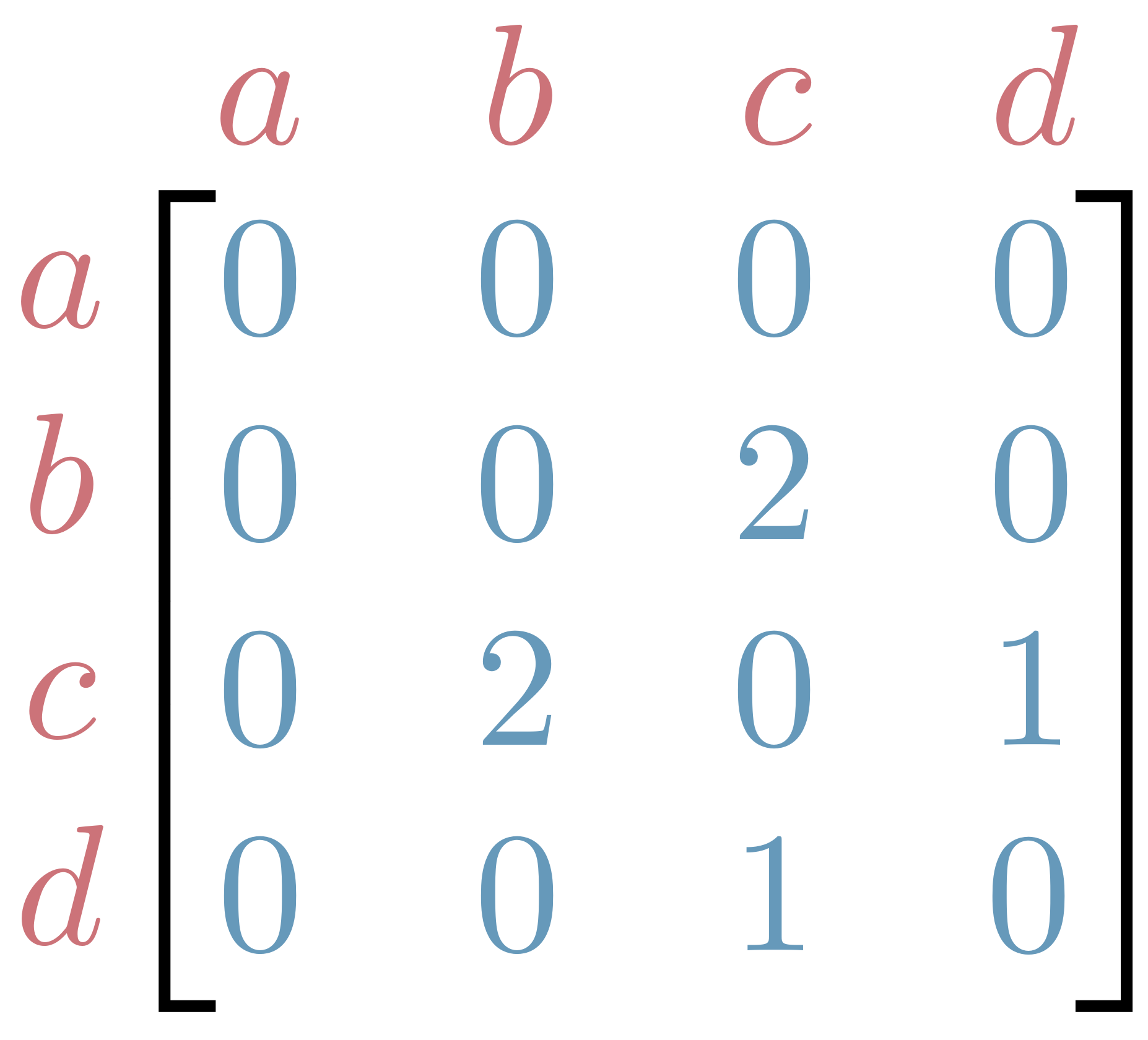Graph Theory

A graph is something with this structure:






A graph is a pair of two sets such that the second set is a set of two-element subsets of the first set.\[ G = (V, E) \]
|
\(G = ( \)
|
|
|
\(\{a,b,c,d\}\)
|
|
|
\(,\)
|
|
|
\(\{ \{ a,b \}, \{ a,c \}, \{ b,c \}, \{ c,d \} \} \)
|
|
|
\( ) \)
|


A graph is composed of vertices and edges.
\(G = (V, E)\)
|
A vertex does not require an edge. There can be multiple edges between vertices. No loose edges allowed. The picture is just a picture. |

|


Adjacency List

|
|
Adjacency Matrix

|

|
Adjacency Matrix

|

|

|
| \[ \begin{bmatrix} 0 & 1 & 0 & 0 \\ 1 & 0 & 1 & 1 \\ 0 & 1 & 0 & 0 \\ 0 & 1 & 0 & 0 \\ \end{bmatrix} \] | \[ \begin{bmatrix} 0 & 0 & 0 & 2 \\ 0 & 0 & 2 & 0 \\ 0 & 2 & 0 & 1 \\ 2 & 0 & 1 & 0 \\ \end{bmatrix} \] | \[ \begin{bmatrix} 0 & 1 & 1 & 1 \\ 1 & 0 & 1 & 1 \\ 1 & 1 & 0 & 1 \\ 1 & 1 & 1 & 0 \\ \end{bmatrix} \] |
Practice
Write the adjacency list and adjacency
matrix for the graph below.

Practice
Draw a graph corresponding to the adjacency matrix: \[ \begin{bmatrix} 0 & 1 & 1 \\ 1 & 0 & 0 \\ 1 & 0 & 0 \end{bmatrix} \]
Complement
Given graph \(G=\{V,E\}\), the complement \(\overline{G}\) is the graph with:
- The same vertex set \(V\)
- Edges between vertices \(\{u,v\}\), iff \(\{u,v\} \notin E\)


Complete Graph
A complete graph is a graph where every
vertex is connected to every other vertex.

|

|

|
\(K_{3}\) | \(K_{5}\) | \(K_{12}\) |
Bipartite Graph
A bipartite graph is one where vertices can be separated into two sets such that no edge connects vertices from the same set.

|

|

|
| \(K_{3,2}\) |
Fundamental Graphs
| Complete | Complete Bipartite |
Cycle | Path |

|

|

|

|
| \(K_6\) | \(K_{4,3}\) | \(C_6\) | \(P_6\) |
Fundamental Graphs
| Star |

|
| \(S_6\) |
Fundamental Graphs
| Star | Star |

|

|
| \(S_6\) | \(S_6 = K_{1,5}\) |

|
Walks, trails, paths, and cycles...
A trail is a walk that does not repeat edges.
A path is a walk that does not repeat vertices.
A cycle is a path that starts and ends at the same vertex.
|

|
A walk is a sequence of adjacent vertices.
A trail is a walk that does not repeat edges.
A path is a walk that does not repeat vertices.
A cycle is a path that starts and ends at the same vertex.
|

|
A walk is a sequence of adjacent vertices.
A trail is a walk that does not repeat edges.
A path is a walk that does not repeat vertices.
A cycle is a path that starts and ends at the same vertex.
|

|
A walk is a sequence of adjacent vertices.
A trail is a walk that does not repeat edges.
A path is a walk that does not repeat vertices.
A cycle is a path that starts and ends at the same vertex.
|

|
A walk is a sequence of adjacent vertices.
A trail is a walk that does not repeat edges.
A path is a walk that does not repeat vertices.
A cycle is a path that starts and ends at the same vertex.
|
Tree
A tree is a connected graph with no cycles.

|

|

|

|
An Eulerian trail is a trail that uses each edge exactly once.
A Hamiltonian path is one that visits every vertex exactly once.
|
Equal or Isomorphic

|

|
| \(F=\{ \{a,b,c\}, \{\{a,b\},\{b,c\},\{c,a\}\} \}\) | \(G=\{ \{x,y,z\}, \{\{x,y\},\{y,z\},\{z,x\}\} \}\) |
Subgraph
|
Given a graph \(G=(V,E)\), the graph \(G'=(V',E')\) is a subgraph of \(G\) if \[ V' \subseteq V \text{ and } E' \subseteq E \] |


|
Practice
Weighted Edges

Minimum Spanning Tree

Kruskal's Algorithm — Minimum Spanning Tree
Given a connected graph, find its minimum spanning tree.
- Create list of edges and weights
- Sort edges by weight
- Initialize a graph with the vertices and no edges
- For each edge in list of sorted edges:
- If it would create a cycle, skip edge
- Otherwise, add the edge to the graph
- If all vertices are connected, you're done
Directed Graph

| Graph | A pair of two sets such that the second set is a set of two-element subsets of the first. |
| Equal | Graphs \(G=(V_{G}, E_{G}) \) and \(F=(V_{F}, E_{F})\) are equal if \(V_{G}=V_{F}\) and \(E_{G}=E_{F}\) |
| Subgraph | Graph \(G'=(V',E')\) is a subgraph of \(G=(V,E)\) if \(V' \subseteq V\) and \(E' \subseteq E\) |
| Isomorphic | There is a mapping \(f:V_1 \to V_2\) such that \(\{a,b\}\) is an edge in \(G_1\) iff \(\{f(a),f(b)\}\) is an edge in \(G_2.\) |
| Walk | A sequence of vertices where \(v_{i}\) and \(v_{i+1}\) are adjacent. |
| Trail | A walk that does not repeat edges. |
| Path | A walk that does not repeat vertices. |
| Cycle | A path that starts and ends at the same vertex. |
| Complete | Every vertex is connected to every other vertex. |
| Connected | Every vertex is reachable from every other vertex. |
| Bipartite | Vertices are separable into two sets such that no two vertices from the same set are connected. |
| Tree | A connected graph with no cycles. |
| Eulerian trail | A trail where every edge is used exactly once. |
| Hamiltonian path | A path where every vertex is used exactly once. |
©2025 Jedediyah Williams
This work is licensed under the Creative Commons
Attribution-NonCommercial-ShareAlike 4.0 International License.

To view a copy of this license, visit https://creativecommons.org/licenses/by-nc-sa/4.0/.